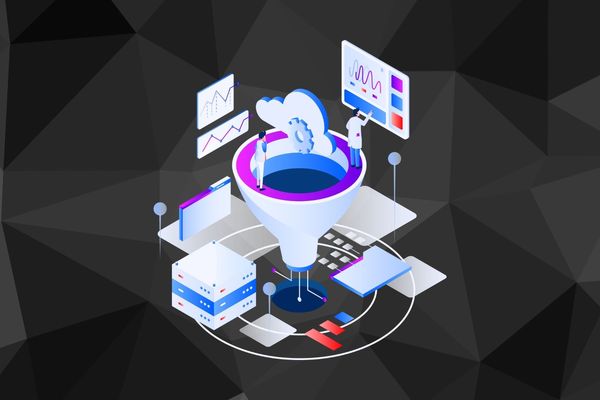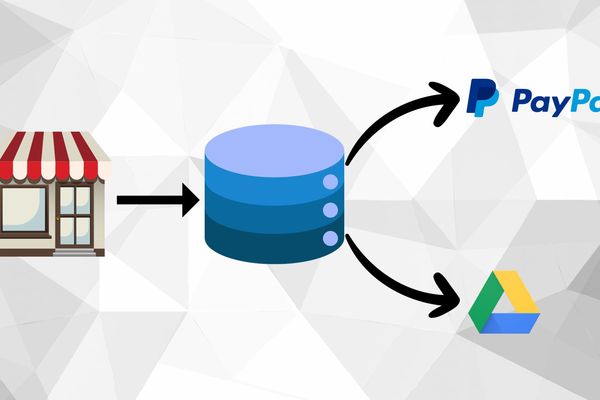
If you’re familiar with the GDPR, then you probably know that the law classifies businesses into data controllers and processors based on their data processing functions.
Although the GDPR doesn’t specifically name any other role, it does hint that data processors can outsource part of their activities to a third party. This third party is known as a “Data Subprocessor.”
So, what is a data subprocessor? How do they fit into your data management practices? And what are the pros and cons of using one?
We’ll answer all these and more in the article below. Let’s get started!
Key Takeaways
A data subprocessor is a third-party contractor that performs specific data-driven operations on behalf of an established data processor.
Data subprocessors have several compliance duties, including following instructions from the processor, maintaining appropriate data security measures, and helping controllers fulfill their GDPR obligations.
Using a subprocessor can be beneficial, given their expertise and cost-efficiency. However, subprocessors can also expose your business to certain compliance and security risks.
What is a Data Subprocessor?

A data subprocessor is an extension of two key roles under the GDPR: Data Controllers and Data Processors.
To better understand what a data subprocessor is, we must first clarify the roles of controllers and processors.
Data Controllers are individuals or companies who determine the purposes and means of processing personal data. For instance, an online retailer who decides what customer data to collect and how it’s used is a controller under the GDPR.
Data processors are individuals or companies who process personal data on behalf of a data controller. These could be cloud service providers, software applications, or external agencies handling specific tasks, but always under the controller’s instructions. For instance, a payroll service handling a company’s employee salaries is a data processor.
Data subprocessors, however, add another layer to this structure. They’re third-party vendors hired by data processors to perform specific duties in the controller’s interest.
This means the data subprocessor can access the controller’s data through its connection with the data processor.
Under Article 28(2), the GDPR allows processors to delegate part of their operations to subprocessors only after getting the controller’s written approval.
If the controller approves, the processor must set up a contract with the subprocessor (also known as a Data Processing Agreement). This contract must include the same terms as the processor’s original contract with the controller.
Understanding how these roles interact is vital for your GDPR compliance program. After all, engaging third parties increases the risks of your data being illegally disclosed and misused.
To solidify your understanding of the relationship between controllers, processors, and subprocessors, let’s go over a few examples.
Examples of Data Subprocessors

Suppose you run an online retail store (the data controller) and engage a cloud service provider like Google Drive (the data processor) to store your customers’ data. If Google Drive further hires a specialized analytics firm to extract insights from the stored data, the analytics firm is the data subprocessor.
Picture this: You operate an e-commerce business using Shopify to manage your online store. To handle your payment transactions, Shopify employs a payment gateway service like PayPal. In this scenario, you—the e-commerce business—are the data controller. Shopify is the data processor. And PayPal is the data subprocessor.
You’re a beverage manufacturer using customer relationship management (CRM) software to manage customer interactions. If the CRM provider uses a third-party service like MailChimp to process email campaigns on your behalf, MailChimp is the data subprocessor.
A healthcare company offers a health-tracking application to its patients. The company uses specialized data analytics software to enhance the app’s features and user experience. The data analytics software, in turn, uses a machine learning algorithm service to provide personalized health recommendations. In this case, the healthcare company is the data controller. The data analytics service is the data processor. And the machine learning algorithm service is the data subprocessor.
Learning and monitoring how data subprocessors handle your data allows you to maintain control throughout the data processing chain. This ultimately serves to protect your customers and their data privacy.
Compliance Duties of a Data Subprocessor

As mentioned, data subprocessors handle operational functions involving personal data on behalf of data processors.
They typically perform data-driven services like cloud storage infrastructure, CRM, and email marketing. Since they handle data, they must meet certain standards to make their services GDPR-compliant.
When it comes to compliance, the duties of a data subprocessor are as follows:
Processing Data Only as Instructed
Data subprocessors are service providers to data processors. As such, they must only process personal data in line with the processor’s explicit instructions.
It’s worth noting that the data processor is fully liable to the controller for the subprocessor’s compliance.
Data Security and Confidentiality
Data subprocessors must implement robust security measures to protect personal data from unauthorized access, breaches, and leaks. As a controller, this highlights the need for you to only engage subprocessors with adequate security standards.
If your subprocessor lacks adequate security, your data could be compromised. This could lead to fines, negative publicity, and legal action against your business.
In practice, adequate security measures include but aren’t limited to the following:
Firewalls
Access controls
Multi-factor authentication
Regular data risk assessments
Data encryption or anonymization
Privacy awareness training for employees
Assisting Data Controllers
The GDPR requires data processors and subprocessors to assist controllers in fulfilling their GDPR compliance requirements.
Practically speaking, data subprocessors can assist controllers in the following areas:
- Responding to Data Subject Access Requests (DSARs)
- Cooperating with EU Data Protection Authorities (DPAs)
- Providing information about data processing activities upon request
By assisting controllers, subprocessors can help demonstrate transparency and accountability throughout the data processing lifecycle.
Subcontracting Only with Authorization
If a subprocessor needs to engage yet another third party (i.e., a sub-subprocessor) to carry out specific tasks, they must obtain prior written approval from the data controller.
At this point, the process simply repeats itself. In other words, if the controller approves, the subprocessor must draw up a contract with the new third party and be fully liable for their compliance.
Reporting Data Breaches
Data subprocessors must promptly report any data breach to their supervising authority (i.e., the data processor).
The report should include all relevant details about the data breach, including:
- The nature of the breach and data subjects affected
- Contact details of the Data Protection Officer (DPO) or similar source for more information
- The impact of the breach
- The steps taken (or to be taken) to mitigate identified threats
How to Identify a Data Subprocessor
At this point, you may wonder how to tell if a company is a data subprocessor under the GDPR. We’ve got you covered.
To determine if a business is functioning as a data subprocessor, consider the following questions:
- Is the business processing personal data on behalf of another company?
- Is the business’s purpose for processing data predetermined by someone else?
- Is the business’s data processing activities governed by a contract with another company?
- Does the business follow the explicit instructions of another company (i.e., a data processor) when processing personal data?
If all answers to these questions are yes, then the business in question is likely a data subprocessor.
Pros & Cons of Using a Data Subprocessor
Engaging a data subprocessor offers significant benefits, but it also comes with its set of drawbacks.
To make an informed decision that best serves your business interests, you must weigh these pros and cons carefully. When doing this, consider your compliance obligations and risk tolerance.
Without further ado, let’s go over them.
Pros of Engaging a Data Subprocessor
- Efficient Operations: Engaging a data subprocessor can enhance the efficiency of your data operations. Since subprocessors are experts in their field, they can optimize relevant parts of your activities, leading to faster and more effective outcomes.
- Expertise: Subprocessors often bring a high level of expertise and specialized knowledge to the table. By leveraging their skill set, you enjoy the benefits of having your data handled by professionals well-versed in data management.
- Scalability: As your business grows and your data processing needs expand, a data subprocessor can easily scale operations to accommodate the increased workload.
This scalability ensures that your data processing remains efficient and uninterrupted, even during periods of rapid growth.
- Cost Efficiency: Outsourcing data processing to a subprocessor is often more cost-effective than attempting to handle the operations in-house.
It saves you expenses related to hiring and training an internal team or investing in the necessary infrastructure.
- Focus on Core Competencies: Delegating data processing to a subprocessor lets you focus on your core business functions. It frees up your time and resources, allowing you to concentrate on strategic initiatives, innovation, and enhancing your products or services.
Cons of Engaging a Data Subprocessor
- Loss of Control: One of the significant drawbacks of engaging a data subprocessor is the potential loss of control over certain aspects of data processing. You must rely on the subprocessor to handle the data per the agreed terms of your contract.
- Data Security Risks: Entrusting a third party with your data introduces some security risks. Despite adequate security measures, the risk of data breaches and unauthorized access always exists, potentially jeopardizing the integrity of your data.
- Compliance Risks: Engaging a subprocessor may also introduce compliance risks under data privacy laws like the GDPR. If the subprocessor fails to adhere to legal requirements, it can result in regulatory non-compliance and associated penalties.
- Dependency on Third Party: Relying heavily on a subprocessor can create a dependency, making your operations vulnerable to changes or disruptions on their end. In other words, if the subprocessor faces issues or goes out of business, your data processing capabilities could suffer the consequences.
- Data Processing Alignment: Ensuring that the subprocessor aligns with your specific data processing needs and follows your guidelines can often be challenging. Any misalignment could hinder your data processing objectives.
Next Steps
Did you get clarity on the role and implications of a data subprocessor? Great! You’re now equipped to integrate this knowledge into your data privacy strategy.
At Captain Compliance, we specialize in guiding businesses like yours through every step of your data privacy compliance journey.
From comprehensive assessments to streamlined compliance frameworks, we empower you to make informed decisions and strengthen your approach to data protection.
Ready to enjoy compliance success? Get in touch today!
FAQs
What is a data subprocessor, and how does it relate to data processing within my business?
A data subprocessor is a specialized third-party that processes personal data on behalf of a primary data processor.
Suppose your business hires a cloud service provider who, in turn, engages an email marketing agency. In this case, the cloud service is your data processor, and the email agency is your data subprocessor.
Understanding this relationship helps you manage compliance responsibilities within your data processing chain.
Check out our Data Protection Compliance Services
How can I determine if my business functions as a data subprocessor under GDPR?
If you follow instructions from a data processor and don’t make the decisions about data collection and processing purposes, you likely function as a data subprocessor.
Knowing your role allows you to play your part diligently and promote compliant data management practices.
Learn about key data privacy terms in our dictionary
What are the key compliance responsibilities of a data subprocessor?
While there might be some case-specific duties, data subprocessors generally perform the following compliance functions:
- Process data as instructed
- Implement robust data security measures
- Promptly report data breaches to the data controller
- Assist data controllers with their compliance obligations
Find out how to develop your Crisis Management Action Plan
What risks are associated with engaging a data subprocessor, and how can they be mitigated effectively?
Typical risks include loss of control, potential security breaches, non-compliance, and dependency on third parties.
You can mitigate these risks by conducting thorough due diligence before hiring a subprocessor. This way, you enjoy contractual transparency and effective security and compliance protocols from a reliable provider.
Learn more about Navigating the Third-party Risk Management Process